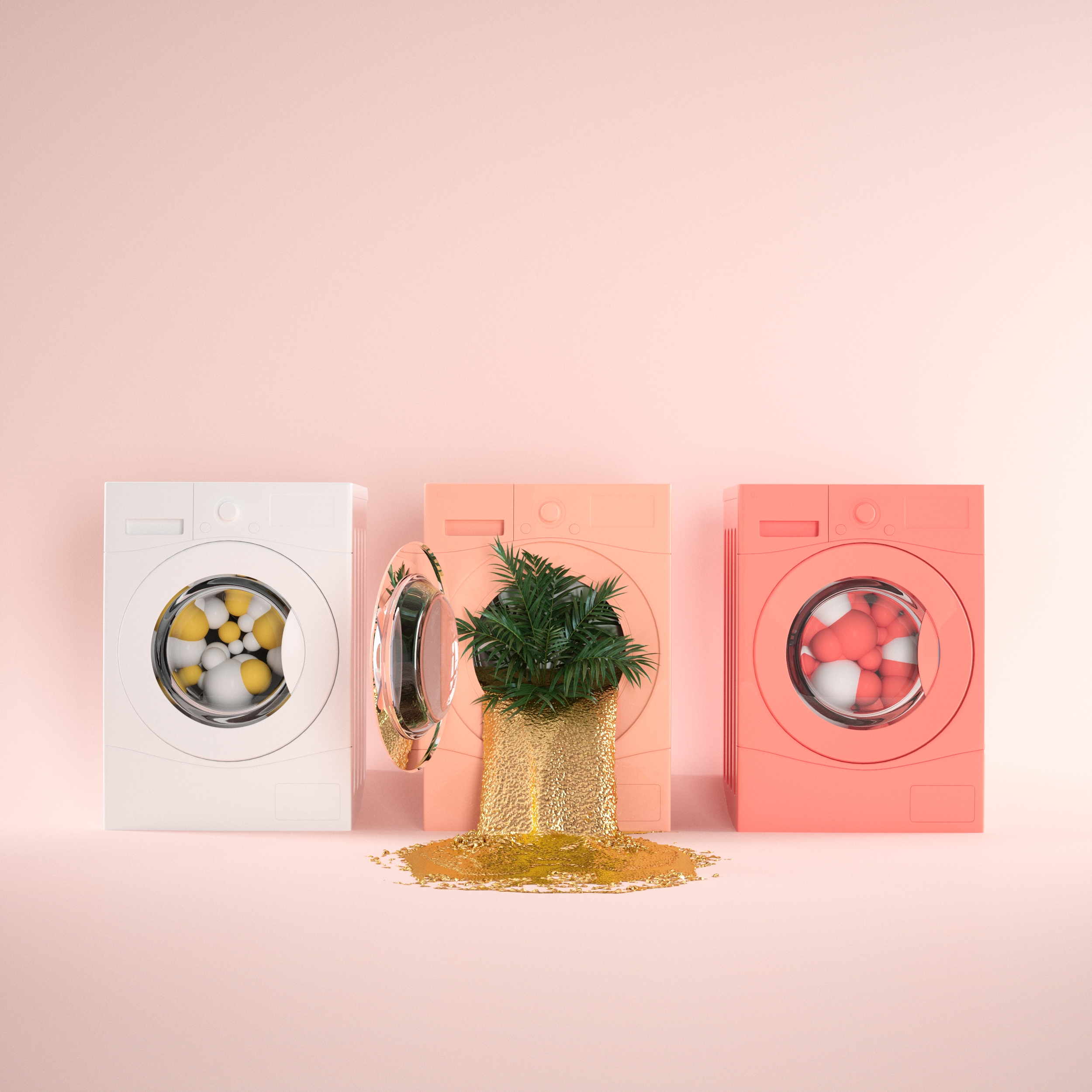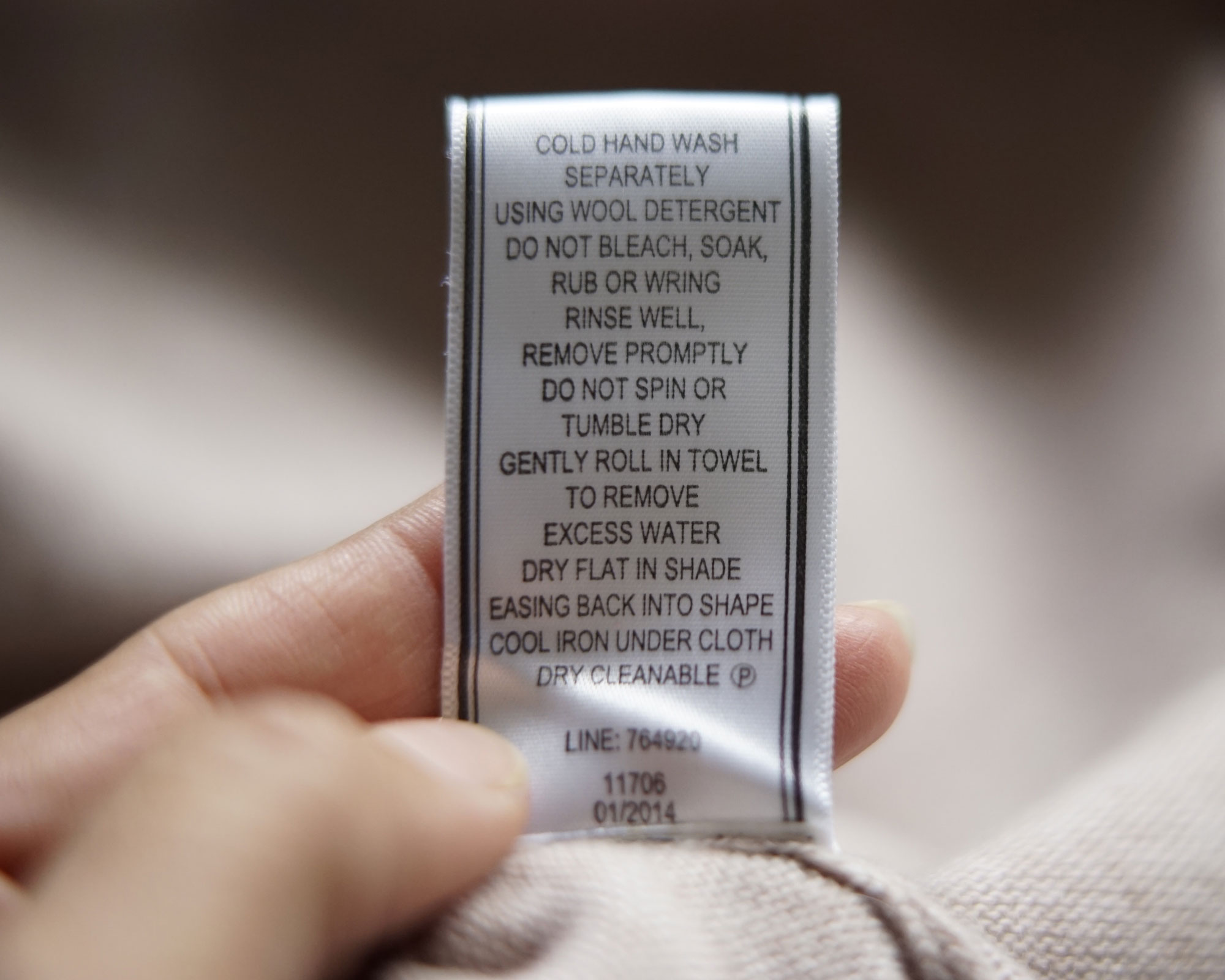How to use a washing machine – wash clothes and manage your washer correctly
Ready to learn how to use a washing machine properly? Here's how to boss your laundry schedule and extend the life of your washing machine and clothes.

Christina Chrysostomou

How to use a washing machine entails a little more effort than you would think.
And it's pretty important to get right for the sake of your appliance, clothes, and other bits you want to get bling. Whether you've just bought one of the best washing machines, have had yours for years, or your rental has come complete with this white good, you'll want to make sure you're using it properly to ensure it doesn't break down, and gets rid of grubby stains on your garments too.
Aside from learning all the washing symbols on your washer and learning the best ways to do washing, how to load a washing machine correctly can make a huge difference to how clean your fashion items and linens will be when they come out of the wash.
How to use a washing machine
Chris Jindra, senior brand manager, Proctor & Gamble explains, 'Loading your washing machine correctly can give you much better washing results, not to mention also help you cut down on waste.'

Don't overload the washing machine
When using a washing machine, our advice begins with a lesson on overstuffing your machine. If you cram clothes too tightly in the machine, water won't have room properly circulate, leading to wrinkles and limited stain removal.
Even if you have a large load, the items shouldn't fill the washer more than three quarters full and the items should be evenly and loosely spread out.
'Your load may not feel too heavy when it goes into the machine, but just imagine how heavy it will be once it’s soaking wet. Too much weight can unbalance the machine and affect its performance over time. Another reason not to cram.' says Lara Brittain, category director, Currys.
Get small space home decor ideas, celeb inspiration, DIY tips and more, straight to your inbox!
Front loading washing machines should have clothes piled no more than the top of the door. For top-loaders, avoid loading past the agitator.
If you are washing duvets or other large items like blankets and rugs, put them in separately adding a few towels for proper spinning action.
Iain Starkey, head of brand, Beko explains more. He says:
'A good rule of thumb to follow is to fill the drum to about 80% without compacting items down (this only applies to normal cotton cycles – the amount of laundry you can put in for special programmes will vary, so check your appliance’s user manual).'
'When it comes to actually putting your laundry into the machine, put items in one by one, or at least make sure they’re not tangled.'
Evan Brody, chief marketing officer, Tide also suggests this nifty trick: 'So here’s the palm trick you could try every time to check if you’re machine is overloaded: Just place your hand into the drum – it’s easy as that.'
'If your hand fits between your clothes and the wall of the drum, then you have the perfect load size. If not, it’s best to take something out. If you find you’ve got even more space in there, you can add more clothes to save more water.'
And how to load a washing machine that's top loaded usually differs from front load washing machines. Brody explains:
'Every machine is different when it comes to the load sizes they can handle. Top loaders are usually not as large as front-loading machines, so a full load would be about 12 pounds of laundry.'
'Make sure to check the washer’s capacity recommendation for the exact amount.'
Follow loading order
How to load a washing machine in the correct order?
Always make sure you check loading instructions for your washer so you prevent excessive detergent suds, potential fabric damage and any other mishaps.
The most common load order is detergent, then clothes and once you've got everything in, set the correct temperature and cycle to start the machine, stat.
Most front loading machines have a handy detergent dispenser which will dispense the detergent just at the right time.
Add correct detergent (and the right amount of it)
Adding the correct amount of detergent is also key in getting your washing right.
If you load the clothes in right, but the detergent dosage is wrong, you'll also have semi-unwashed clothes to deal with at the end of the cycle.
The easiest way to add detergent correctly is with the best washing pods as opposed to liquid detergent.
Paying attention to the washing detergent instructions is the key to getting your wash right.
Liquid detergent can be measured out and can go either in the drum or dispenser, whereas washing powder needs to go in the dispenser.
Usually, if you're washing a half load, it's best to use less detergent. If you use too much detergent, it could spell a residue build-up in your machine, making your next load dingy. If you think this might be a problem for your washer, learn how to clean a washing machine with our guide.
'Detergent takes a long time to dissolve and using too much makes it harder to wash it out.' says Brittain.
'Fortunately, many washing machines pre-mix the detergent and softener with water before it enters the drum. The detergent is fully dissolved, with the mix getting to work immediately. That means you can go easy on the detergent and still get great results!'
However, there are other factors that need to be considered when choosing the correct dosage, such as how soiled the clothes are and the level of water hardness.
Kate Cecile-Pritchard, user marketing manager, Bosch explains more about how to load a washing machine with detergent. She says: 'Using too much or too little detergent in your washing machine can lead to poor washing results.'
'When it comes to using the correct dosage of detergent, there are three key facts to consider.'
'The amount of dirt in the washing. The more dirty the clothes are, the more detergent that's needed to remove it.'
'You may not see it, but approximately 70% of dirt on clothes comes from the body, such as skin, sweat, grease and other bodily fluids. Only 30% of dirt on clothes comes from external sources, such as food, mud, grass, lotions and creams.'
'The size of the washing load. Detergent dosage instructions are based upon a washing machine's drum size, and for good reason.'
'The larger the washing load, the more dirt introduced and therefore the more detergent that's needed to remove it.'
'The water hardness level in your area. Hard water contains a high concentration of minerals which need to be softened and neutralized for more effective cleaning results.'
'It's for this reason that detergent manufacturers recommend using slightly more detergent than normal in hard water areas.'
Know when to use fabric softener (and when to avoid it)
Fabric conditioners (also known as fabric softeners) are a great way to keep your clothes feeling and smelling great. Just as you'd use shampoo to clean your hair, and conditioner to improve the texture of your tresses, you can use this liquid to give garments and homeware a luxury feel. Plus, it can also help to remove creases in your clothes.
However, before you use a cap-sized amount in your wash, note that it should be avoided in some instances. For example, cleanfluencer Lynsey Crombie, aka Lynsey Queen of Clean, says to avoid using this product when washing your microfiber cloths.
Asia Banger, brand manager, Persil says: 'Any item that is intended to absorb – such as hand and bath towels, tea towels, and microfiber cloths that are designed to absorb water, and quick-dry sportswear which absorbs sweat, should be treated with care. To keep towels soft and fluffy, yet still absorbent – wash alternately with and without fabric conditioner.'
And Brittain warns: 'Fabric softeners aren’t for everyone,'
'They can often contain chemicals that produce allergic reactions in some people. If you have young children or sensitive skin and want to try something a bit more natural, try adding vinegar to your wash – it’s non-toxic and perfume-free, and it will leave your clothes feeling as soft and fluffy as ever.'
So if your family does suffer from dermatological (skin) conditions like eczema or psoriasis, seek medical advice first, but we'd suggest looking for the best eco-friendly washing powders and liquids for a fresh laundry load without the use of toxic chemicals or additives.

Prevent common laundry mistakes
Need to know how to use a washing machine without making any mistakes? We've got some pointers for you.
Reading the care labels or washing symbols on garments will give you a clear indication on what cycle to use for them and make sure mishaps are avoided.
If you have time, (we know, we know, you don't) before adding clothes into the washer – give the pockets a quick check.
There could be a tissue stuffed in one, maybe an electronic car key (which will get damaged) or loose coins which could all not only wreak havoc in your machine but could damage your clothes too.
Another one of our laundry hacks is to prep items by doing up zippers, fastening hooks, unrolling cuffs, tying drawstrings, turning pockets inside out.
You could go one step further by turning dark clothes, like jeans, inside out to preserve their color and protect other items in the process.
To back our theory up, Brittain says: 'Do you often take dark clothes such as black jeans out of the wash to find them covered in white streaks?'
'This is usually caused by friction inside the washing machine which rubs the dye away. The best way to avoid it? Try turning your clothes inside out before the wash. That way, most of the rubbing will happen to the inside of your garments.
Wash items at the right temperature
Using a washing machine at a high temperature won't necessarily deliver better results and you should be careful with delicate materials, especially if you want to know to how to wash silk pillowcases and your fave designer dresses without racking up an expensive dry cleaning bill.
'Washing at 30º used to mean you compromised on cleaning power – while washing your best bath towels or bed sheets at a cooler temperature were a complete no-no.' says Brittain.
'30 is the new 60 – modern washing machines work wonderfully at lower temperatures. They can even purify water of harsh minerals so that detergent is activated at much lower temperatures. The result? Cleaning benefits of a 60º wash at just 30º. This is great for the environment and your energy bills too.'
What to put in the washing machine
When using a washing machine, you might think that you can only use it to wash clothing and bedding. However much more can be cleaned in your stain-removing apparatus.
Want to know how to clean sneakers – walk this way! What about how to wash a weighted blanket? Well don't be pinned down with doubt as we've got specialist guides on every type of washable textile and how to do laundry.
It should be said however, that not everything can go in the washing machine. So if you're unsure if your expensive designer fits are suitable, don't risk it. If you're in doubt about how to wash silk, including pillowcases, the positive news is that most machines have a special setting for this. But, if you're still a little scared to pop items made from this material in your automatic washer, you can of course, wash them by hand.
If you're not sure the right method to manually hand-wash clothes, we've got a step-by-step guide on how to wash clothes by hand including slinky dresses and delicate lingerie.
What to do if your washing machine stops working
Maintaining your machine is essential to keep it in a clean bill of health, and this includes using one of the best washing machine cleaners frequently. You should also aim to wipe down the rubber seals regularly, especially if you see black marks on your doors, or notice your clothes are dirtier after dispensing them into your washer-dryer.
But accidents do happen, and over time parts can wear, which can lead to poor performance. Most of the time, unfortunate incidents are covered under your manufacturer's warranty. However, if you've owned the spinner for slightly longer than this, and it goes skew-whiff (typical!), knowing how to repair a washing machine can save you hundreds – if not thousands of dollars.
The good thing is that if you've invested in a smart washing machine, many of these will tell you if it's got a problem, and even ping a notification to your smartphone so you won't have to be surprised by a smelly or leaky washer to know something's gone awry.
What is the correct load size for my washing machine?
Whether you've got a small, medium or large washing machine, overloading it with too many items is a surefire way to damage your appliance. If you thought your washing basket was heavy, just think about how much your clothes would weigh when they are saturated with water!
But, you don't have to use your best bathroom scales to determine how much to put into your machine. Instead, Starkey shares this 'handy' trick...
He says: 'Overloading the drum will affect the machine’s performance and reduce its life. You should be able to fit your whole hand in comfortably in the top of the drum once it’s full. If you can’t, then consider removing some items.'
Can I mix colored and whites clothing in the same load?
There's nothing worse than a crisp white garment turning pastel from a brightly-colored piece of clothing. But separating loads can be time-consuming and less eco-friendly than chucking everything in at the same time. Because who has time for half loads?
The question is: what can you do to be sure that pigments won't penetrate into other fabrics? The answer is quite simple, and it takes seconds to check.
'Rather than worrying whether clothing colors will bleed or not, why not try the dye test?' asks Starkey.
'To do this, dampen a small area of the material and press a white tissue or clean cloth onto it. If any color transfers, it’s a good idea to wash it separately from your other clothes.'
Of course, there are products out there to further protect your purchases. We swear by the Shout Color Catcher Sheets for Laundry, which you can find on Amazon. And, with 72 sheets in a pack, these dye-trapping leaves lock up loose dyes found in the wash water.
How to get sweat stains out of clothing?
Sweat stains, pit patches... Whatever you like to call them - we can all agree that they're a bit embarrassing. And while some can take on a dark, shadow-like form, others can appear yellow. A fashion faux pas if ever we saw one.
But rather than throwing away your much-loved blouse in the trash, check your pantry or store cupboard for a cheap and inexpensive stain-busting ingredient.
'If you have sweat stains on white clothing which you’re wanting to get rid of, rub a little white vinegar on the patches before popping them into the machine. This is a simple but effective stain remover (It’s worth noting that you should check the garment labels before trialing this).' says Starkey.

Jenny is Senior Digital Editor and joined the team in January 2021. She also works on the homes brands' video show, on the Future Homes Network, which is packed full of ideas to help you make the most of your own home and garden. Since getting on the property market with her first apartment and then more recently a house, her passion for interior design and gardening has taken on a new lease of life. Jenny's currently on the lookout for a doer-upper to put her stamp on. She loves collecting and salvaging unique items (much to her other half's despair) but sniffing out stylish home bargains is her one true love. When she has a spare minute, she loves to do a spot of crafting, having studied textiles at Uni – although she hardly gets the chance with a toddler who keeps her permanently on her toes.
- Christina ChrysostomouFormer acting head ecommerce editor